The risk ratio In practice, risks and odds for a single group are not nearly as interesting as a comparison of risks and odds between two groups For risk you can make these comparisons by dividing the risk for one group (usually the group exposed to the risk factor) by the risk for the second, nonexposed, group This gives us the risk ratio3 Relative Risk (Risk Ratio) • Expresses how many times more (or less) likely an exposed person develops an outcome relative to an unexposed person • Interpretation – RR >The absolute risk is the probability of an event in a sample or population of interest The relative risk (RR) is the risk of the event in an experimental group relative to that in a control group The odds ratio (OR) is the odds of an event in an experimental group relative to that in a control group
Relative Risk Ratios And Odds Ratios
Odds ratio vs relative risk interpretation
Odds ratio vs relative risk interpretation-Odds ratio vs relative risk Odds ratios and relative risks are interpreted in much the same way and if and are much less than and then the odds ratio will be almost the same as the relative risk In some sense the relative risk is a more intuitive measure of effect size Note that the choice is only for prospective studies were the distinctionIntroduction and background Risk ratios, odds ratios, and hazard ratios are three ubiquitous statistical measures in clinical research, yet are often misused or misunderstood in their interpretation of a study's results A 01 paper looking at the use of odds ratios in obstetrics and gynecology research reported 26% of studies (N = 151) misinterpreted odds ratios as risk ratios



Relative Risk Vs Odds Ratio Authorstream
Rather the odds is threefold greater Interpretation of an OR must be in terms of odds, notIt is assumed that, if the prevalence of the disease is low, then the odds ratio approaches the relative risk Case control studies are relatively inexpensive and less timeconsuming than cohort studies In this case the odds ratio (OR) is equal to 16 and the relative risk (RR) is equal to 865Therefore, odds ratios from most casecontrol studies can be interpreted as risk ratios However, if a study outcome is common, the odds ratio will be further from 1 than the risk ratio
The quote surely just means to say that the odds ratio is a relative risk measure rather than an estimate of the relative risk, which as already point out is only approximately the case in cohort studies/randomized trials for very low proportions By relative risk measure I mean something that is given relative to some comparison group in a way that the absolute difference depends on theRisk Ratio For the study examining wound infections after incidental appendectomy, the risk of wound infection in each exposure group is estimated from the cumulative incidence The relative risk (or risk ratio) is an intuitive way to compare the risks for the two groupsRelative risks and odds ratios are widely reported in the medical literature, but can be very difficult to understand We sought to further clarify these important indices Methods We illustrated both relative risks and odds ratios using bar charts, then looked at the types of study for which each statistic is suited
RELATIVE RISK AND ODDS RATIO The relative risk (also known as risk ratio RR) is the ratio of risk of an event in one group (eg, exposed group) versus the risk of the event in the other group (eg, nonexposed group) The odds ratio (OR) is the ratio of odds of an event in one group versus the odds of the event in the other groupOdds Ratio Vs Relative Risk Bila dua kelompok sedang dalam studi atau observasi, Anda dapat menggunakan dua ukuran untuk menggambarkan kemungkinan komparatif sebuah peristiwa yang terjadiKedua ukuran ini adalah odds ratio dan relative risk Keduanya merupakan dua konsep statistik yang berbeda, meski begitu banyak saling berkaitan satu sama lainOdds ratio (OR) is a statistic commonly encountered in professional or scientific medical literature Most readers perceive it as relative risk (RR), although most of them do not know why that




Www Ncbi Nlm Nih Gov Books Nbk1691 Bin Tr0003




The Relative Risk Odds Ratio And 95 Confidence Interval Comparing Download Scientific Diagram
The odds ratio supports clinical decisions by providing information on the odds of a particular outcome relative to the odds of another outcome In the endocarditis example, the risk (or odds) of dying if treated with the new drug is relative to the risk (odds) of dying if treated with the standard treatment antibiotic protocolAn odds ratio of 112 means the odds of having eaten lettuce were 11 times higher among casepatients than controls Because the odds ratio is greater than 10, lettuce might be a risk factor for illness after the luncheon The magnitude of the odds ratioIf the relative risk is 1, the tutoring made no difference at all If it's above 1, then the tutored group actually had a higher risk of failing than the controls Odds Ratio The odds ratio is the ratio of the odds of an event in the Treatment group




Odds Ratio Litfl Ccc Research




Odds Ratio Hazard Ratio And Relative Ratio Hazard Ratio And Relative Risk 63 Table 5 Examples Of Rr And Or For Different Probabilities Dagger 1 Dagger 2 Rr Or 4 1 4 6 2 3 67 58 04 Pdf Document
ODDS RATIO Odds compare events with nonevents If a horse wins 2 out of every 5 races, its odds of winning are 2 to 3 (expressed as 23) An odds ratio is a ratio of ratios It compares the presence to absence of an exposure given that we already know about a specific outcome (eg, presencetoabsence ratio of cigarette smoking inOdds ratios (OR) are commonly reported in the medical literature as the measure of association between exposure and outcome However, it is relative risk that people more intuitively understand as a measure of association Relative risk can be directly determined in a cohort study by calculating a risk ratio (RR)The risk ratio (or relative risk) is the ratio of the risk of an event in the two groups, whereas the odds ratio is the ratio of the odds of an event (see Box 92a ) For both measures a value of 1 indicates that the estimated effects are the same for both interventions Neither the risk ratio nor the odds ratio can be calculated for a study
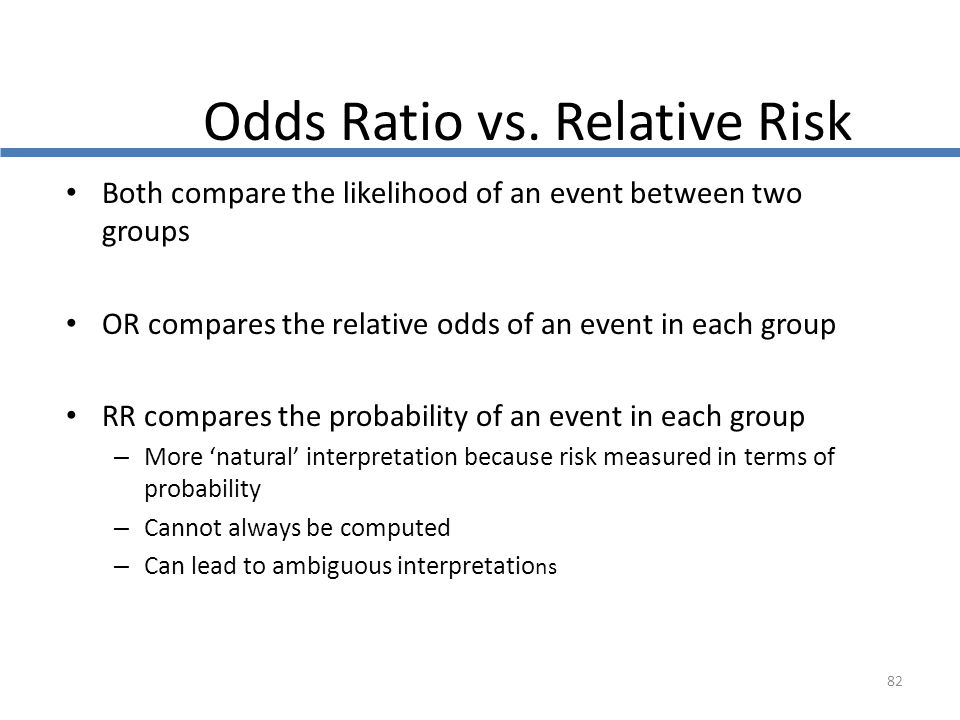



Cph Exam Review Epidemiology Ppt Download




Statistics Part 13 Measuring Association Between Categorical Data Relative Risk Odds Ratio Attributable Risk Logistic Regression Data Lab Bangladesh
Odds Ratio and Relative Risk Calculates odds ratio and relative risk Relative risk is approximated by the odds ratio when the outcome of a particular result is uncommon (15% or less) With a common result, the two numbers diverge In logistic regression, the odds ratio equals the antilogarithm of a coefficient Katz MHAbout Press Copyright Contact us Creators Advertise Developers Terms Privacy Policy &The Relative Risk Ratio and Odds Ratio are both used to measure the medical effect of a treatment or variable to which people are exposed The effect could be beneficial (from a therapy) or harmful (from a hazard) Risk is the number of those having the outcome of interest (death, infection, illness, etc) divided by the total number exposed to




Odds Ratios And Risk Ratios Youtube




Statistical Notes For Clinical Researchers Risk Difference Risk Ratio And Odds Ratio
Relative Risk and Odds Ratio Calculator This Relative Risk and Odds Ratio calculator allows you to determine the comparative risk of the occurrence of a significant event (or outcome) for two groups For example, suppose the members of one group each eat a kilo of cheese every day, and the members of another group eat no cheese, and you haveExamples of measures of association include risk ratio (relative risk), rate ratio, odds ratio, and proportionate mortality ratio Risk ratio Definition of risk ratio A risk ratio (RR), also called relative risk, compares the risk of a health event (disease, injury, risk factor, or death) among one group with the risk among another groupRelative risk, Risk difference and Odds ratio When the data to be analyzed consist of counts in a crossclassification of two groups (or conditions) and two outcomes, the data can be represented in a fourfold table as follows Several statistics can be calculated such as relative risk and risk difference, relevant in prospective studies, and



Number Needed To Treat




Marg Innovera
Odds Ratio, Hazard Ratio and Relative Risk Janez Stare1 Delphine MaucortBoulch2 Abstract Odds ratio (OR) is a statistic commonly encountered in professional or scientific medical literature Most readers perceive it as relative risk (RR), although most of them do not know why that would be true But since such perception is mostlyThe homemade video abstract on the BMJ website shows you the difference between odds and risk, and how one odds ratio can mean several different relative risks (RRs), depending on the risk in one of the groups Unfortunately, in some situations, you just have to get an OR, notably logistic regression and retrospective casecontrol studiesWhen the disease is rare, the odds ratio will be a very good approximation of the relative risk The more common the disease, the larger is the gap between odds ratio and relative risk In our example above, p wine and p no_wine were 0009 and 0012 respectively, so the odds ratio was a good approximation of the relative risk OR = 0752 and RR




Converting An Odds Ratio To A Range Of Plausible Relative Risks For Better Communication Of Research Findings The Bmj



Case Control Study Odds Ratio Relative Risk Best Custom Academic Essay Writing Help Writing Services Uk Online Homeworknowcomlink Web Fc2 Com
The relative risk (RR) and the odds ratio (OR) are the two most widely used measures of association in epidemiology The direct computation of relative risks isRelative Risk and Odds Ratio for the obese 3) Overall, you can see that decreasing the baseline incidence will decrease the odds ratio (300 in those who are nonobese versus 129 in those who are obese) Obviously, these results run counter to expected results, putting the onus on the researcher to justify them Similarly, you should findIn medical literature, the relative risk of an outcome is often described as a risk ratio (the probability of an event occurring in an exposed group divided by the probability in a nonexposed group) Certain types of trial designs, however, report risk as an odds ratio This format is commonly expressed in cohort studies using logistic regression




1 The Odds Ratio Relative Odds In A Case Control Study We Do Not Know The Incidence In The Exposed Population Or The Incidence In The Nonexposed Population Ppt Download




Lecture 5 Between Group Inferences Iii Analysis Of Frequencies Categorized Data Flashcards Quizlet
Even with initial risks as high as 50% and very large reductions in this risk (odds ratios of about 01), the odds ratio is only 50% smaller than the relative risk (01 for the odds ratio compared with a true value for the relative risk of 02)When a study outcome is rare in all strata used for an analysis, the odds ratio estimate of causal effects will approximate the risk ratio;Risk Ratio vs Odds Ratio Whereas RR can be interpreted in a straightforward way, OR can not A RR of 3 means the risk of an outcome is increased threefold A RR of 05 means the risk is cut in half But an OR of 3 doesn't mean the risk is threefold;




Il Estimating Odds Ratios And Relative Risks An Chegg Com



Absolute Risk Vs Relative Risk Vs Odds Ratio Pp Made Easy On Vimeo
Odds ratios work the same An odds ratio of 108 will give you an 8% increase in the odds at any value of X Likewise, the difference in the probability (or the odds) depends on the value of X So if you do decide to report the increase in probability at different values of X, you'll have to do it at low, medium, and high values of XSometimes, we see the log odds ratio instead of the odds ratio The log OR comparing women to men is log(144) = 036 The log OR comparing men to women is log(069) = 036 log OR >The odds ratio for lettuce was calculated to be 112 How would you interpret the odds ratio?



Requesting Effect Measures




Effect Sizes Basicmedical Key
If the baseline risk is small, then a relative risk of 5 may not be too seriousThe relative risk and the odds ratio are measures of association between exposure status and disease outcome in a population Relative risk In epidemiology, relative risk (RR) can give us insights in how much more likely an exposed group is to develop a certain disease in comparison to a nonexposed groupThe relative risk is different from the odds ratio, although the odds ratio asymptotically approaches the relative risk for small probabilities of outcomesIf IE is substantially smaller than IN, then IE/(IE IN) IE/IN Similarly, if CE is much smaller than CN, then CE/(CN CE) CE/CN Thus, under the rare disease assumption = () () = In practice the odds ratio is commonly used for




Research Techniques Made Simple Interpreting Measures Of Association In Clinical Research Sciencedirect



Case Control Study Vs Cohort Study Pp Made Easy In Population Perspective Made Easy On Vimeo
The relative risk tells us the ratio of the probability of an event occurring in a treatment group to the probability of an event occurring in a control group It is calculated as Relative risk = A/ (AB) / C/ (CD) In short, here's the difference An odds ratio is a ratio of two odds Relative risk is a ratio of two probabilitiesThe baseline risk is the denominator of relative risk, ie, the risk of the group being compared to In our example, this would be the risk of heart attack for the normal range If this baseline risk is high, then a relative risk of 5 would be alarming;Risk ratios, odds ratios, and hazard ratios are three ubiquitous statistical measures in clinical research, yet are often misused or misunderstood in their interpretation of a study's results A 01 paper looking at the use of odds ratios in obstetrics and gynecology research reported 26% of studies (N = 151) misinterpreted odds ratios as risk ratios , while a




Odds Ratios Vs Risk Ratios Stats By Slough




Odds Ratios Versus Relative Risk
Odds ratio and relative riskPercent increase = (Risk Ratio lower bound – 1) x 100 Percent decrease = (1 – Risk Ratio upper bound) x 100 It's worth stating again when comparing two proportions close to 1 or 0, the risk ratio is usually a better summary than the raw difference Odds Ratios We now turn to odds ratios as yet another way to summarize a 2 x 2 tableThe risk ratio (RR), also called the relative risk, is the ratio of the probability of cancer in smokers to the probability of cancer in nonsmokers RR = (a/ (ab))/ (c/ (cd)) = (a (cd))/ (c (ab)) Given that you know a, b, c, and d, you can compute either of these metrics Yet odds ratio is strongly preferred as the "right" metric to
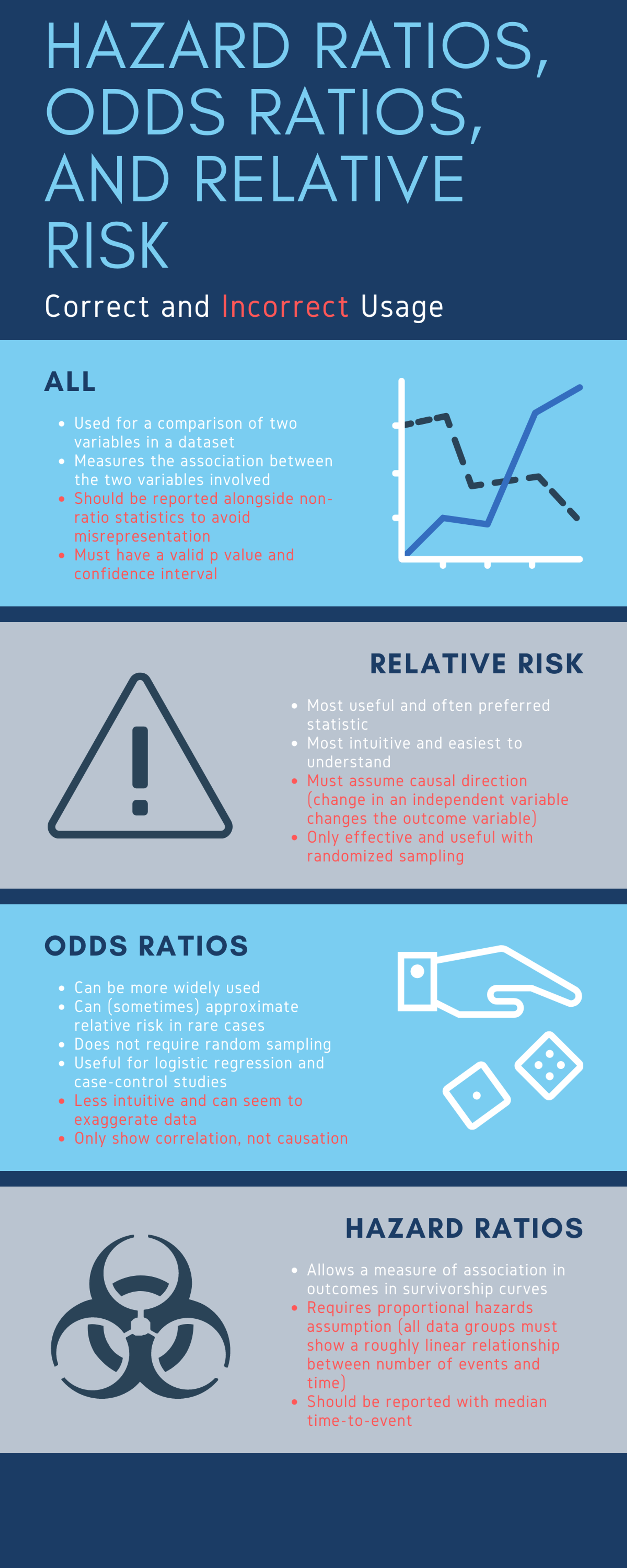



Cureus What S The Risk Differentiating Risk Ratios Odds Ratios And Hazard Ratios




Cecile Janssens A Reminder That Odds Ratios Massively Overestimate Relative Risks When Outcome Is Common In The Population Or By Study Design E G Case Control Studies Io Is Proportion Of Cases
1 Increased risk of outcome – RR = 1 No risk of outcome – RR <The odds ratio will be greater than the relative risk if the relative risk is greater than one and less than the relative risk otherwise In the example above, if the adjusted odds ratio were interpreted as a relative risk, it would suggest that the risk of antibiotic associated diarrhoea is reduced by 75% for the intervention relative to the1 Reduced risk of outcome 4




Odds Ratio Vs Relative Risk What S The Difference Statology




Odds Ratio Vs Relative Risk What S The Difference Statology
Safety How works Test new features Press Copyright Contact us CreatorsRelative risk vs odds ratio Relative risk and odds ratio are often confused or misinterpreted Especially while coefficients in logistic regression are directly interpreted as (adjusted) odds ratio, they are unwittingly translated as (adjusted) relative risks in many public health studies0 decreased risk Odds Ratio 0 5 10 15 More on the Odds Ratio Log Odds Ratio4 2 0 2 4




Reporting The Results Sage Research Methods




Chapter 10 Chi Square Test Relative Risk Odds Ratios
0 increased risk log OR = 0 no difference in risk log OR <




Wasp Write A Scientific Paper Using Excel 12 Odds Ratio And Relative Risk Sciencedirect




Understanding Relative Risk Odds Ratio And Related Terms As Simple As It Can Get Psychiatrist Com




Math Formula To Reproduce A Plot Comparing Relative Risk To Odds Ratios Cross Validated




Understanding The Odds Ratio And The Relative Risk Simon 01 Journal Of Andrology Wiley Online Library




Calculation Of Odds Ratios Or And Relative Risk Rr Derived From Download Scientific Diagram
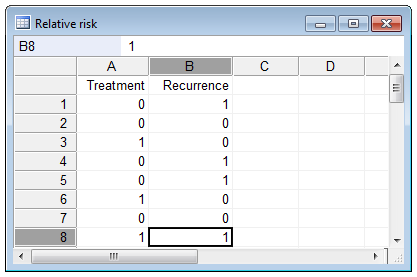



Relative Risk Odds Ratio



1




最新 Odds Ratio Vs Relative Risk Usmle ただの悪魔の画像




Relative Risk And Odds Ratio



Relative Risk Ratio Vs Odd Ratio Ppt Authorstream



1




Relative Risk Wikipedia



Epidemiology Stepwards



Diminishing Odds Ratios Published In Pubmed Health Geomatics Lab




Literature Search
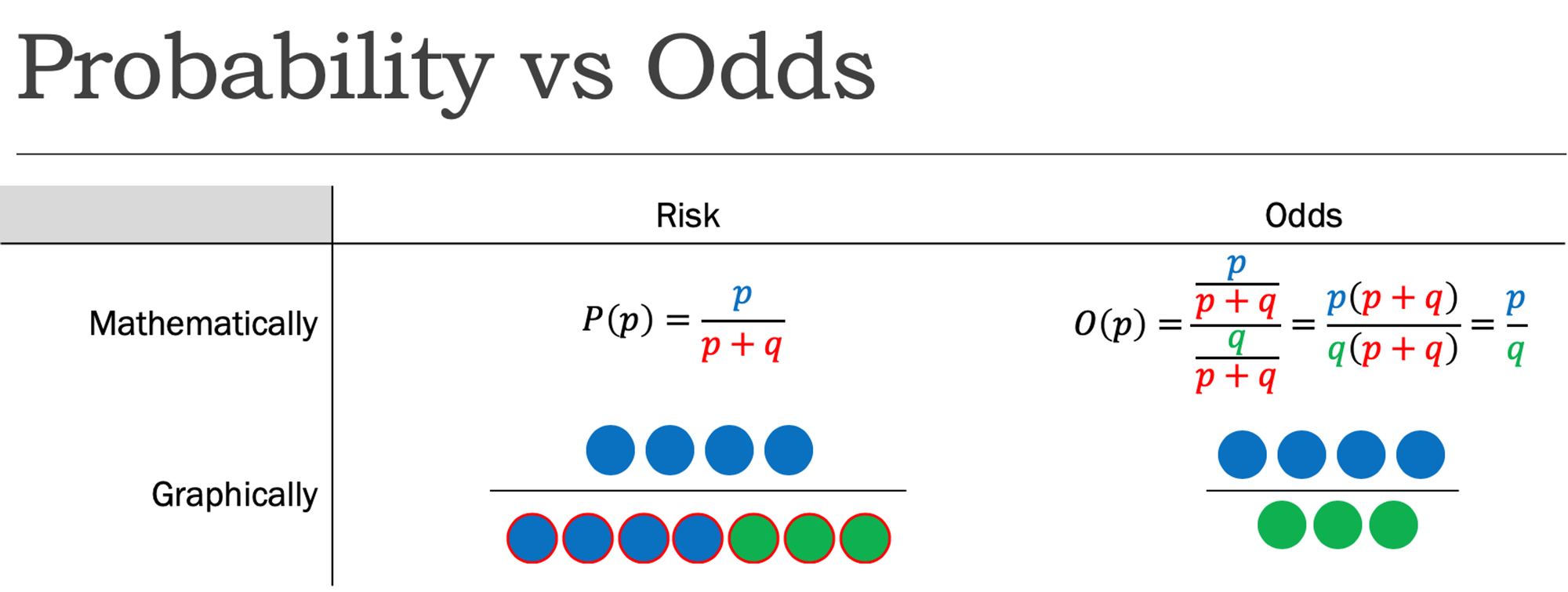



Cureus What S The Risk Differentiating Risk Ratios Odds Ratios And Hazard Ratios




Kevin Whelan If You Re Struggling With Odds Ratios Relative Risks Standardised Mean Differences And Number Needed To Treat And The Associated Alphabet Soup Or Rr Smd Nnt Then This Paper
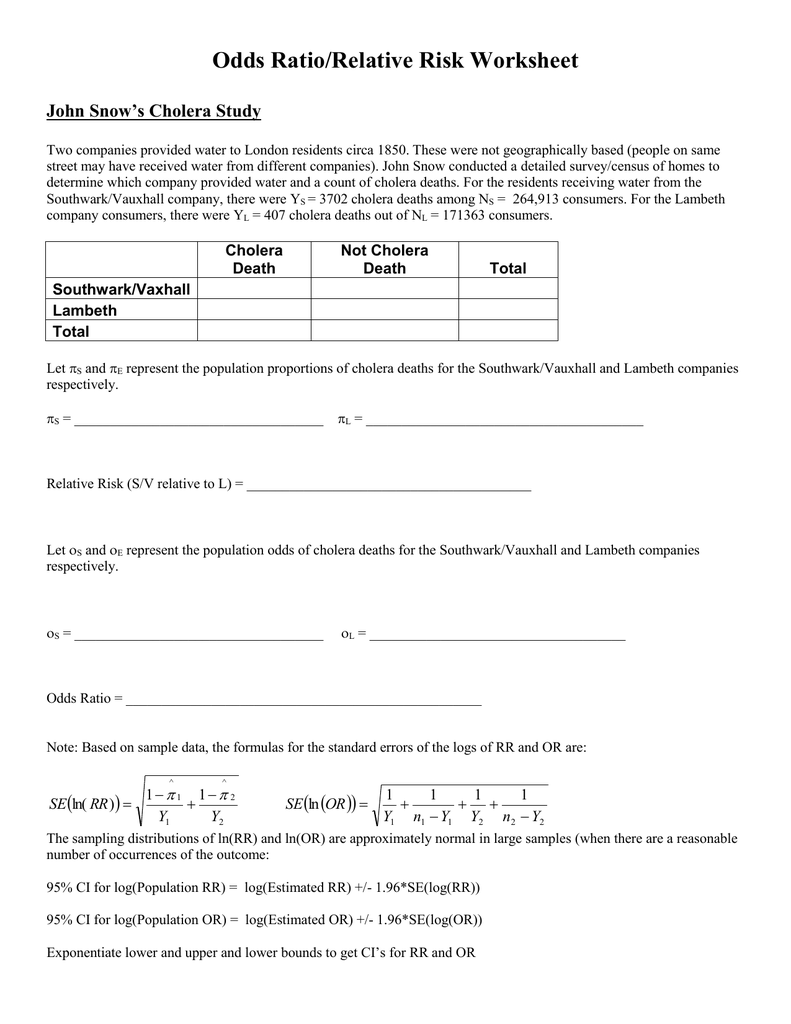



Odds Ratios And Relative Risks John Snow Cholera Data



2
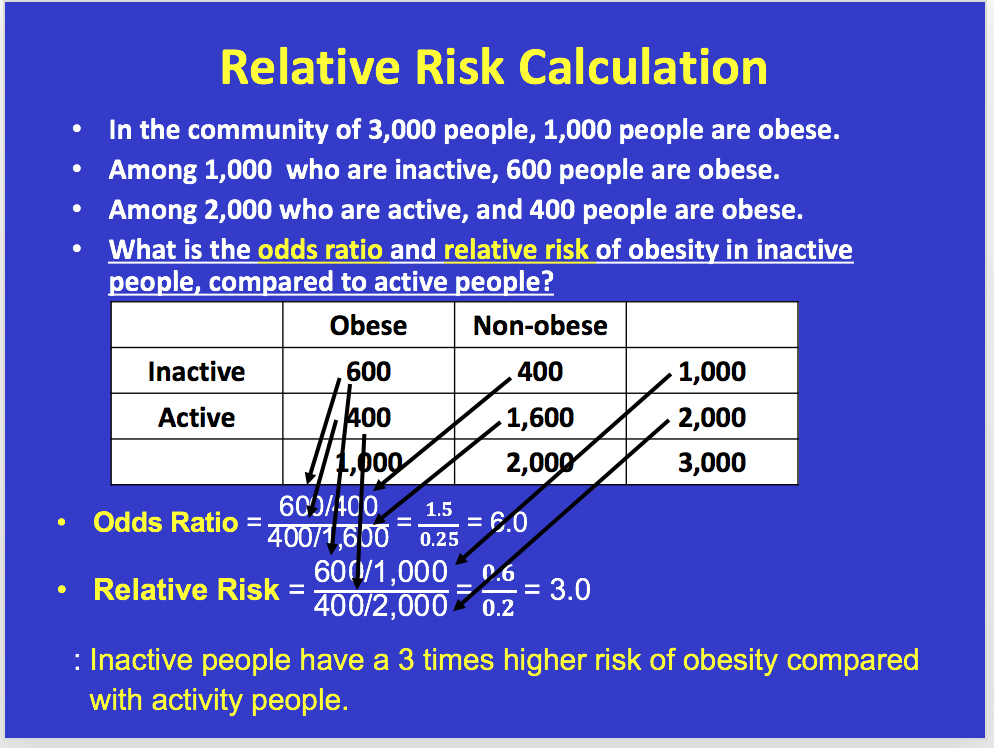



Solved Youll Need To Know Prevalence Rate Odds Ratio Chegg Com



Relative Risk And Odds Ratio Usmle The Journey



Relative Risk Vs Odds Ratio Authorstream
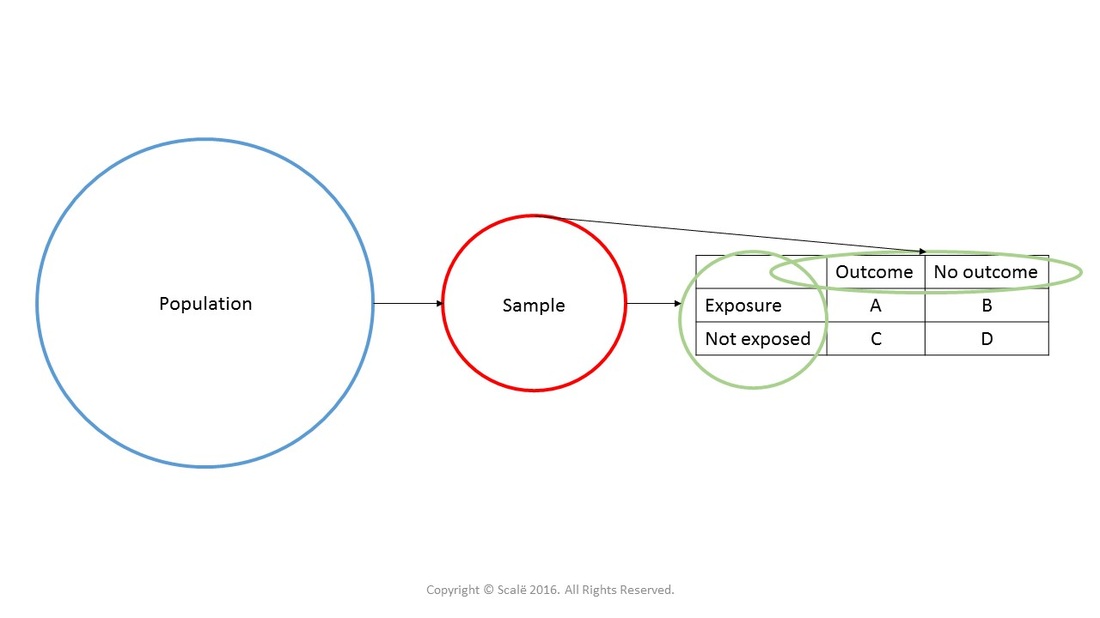



Calculate Relative Risk With 95 Confidence Intervals
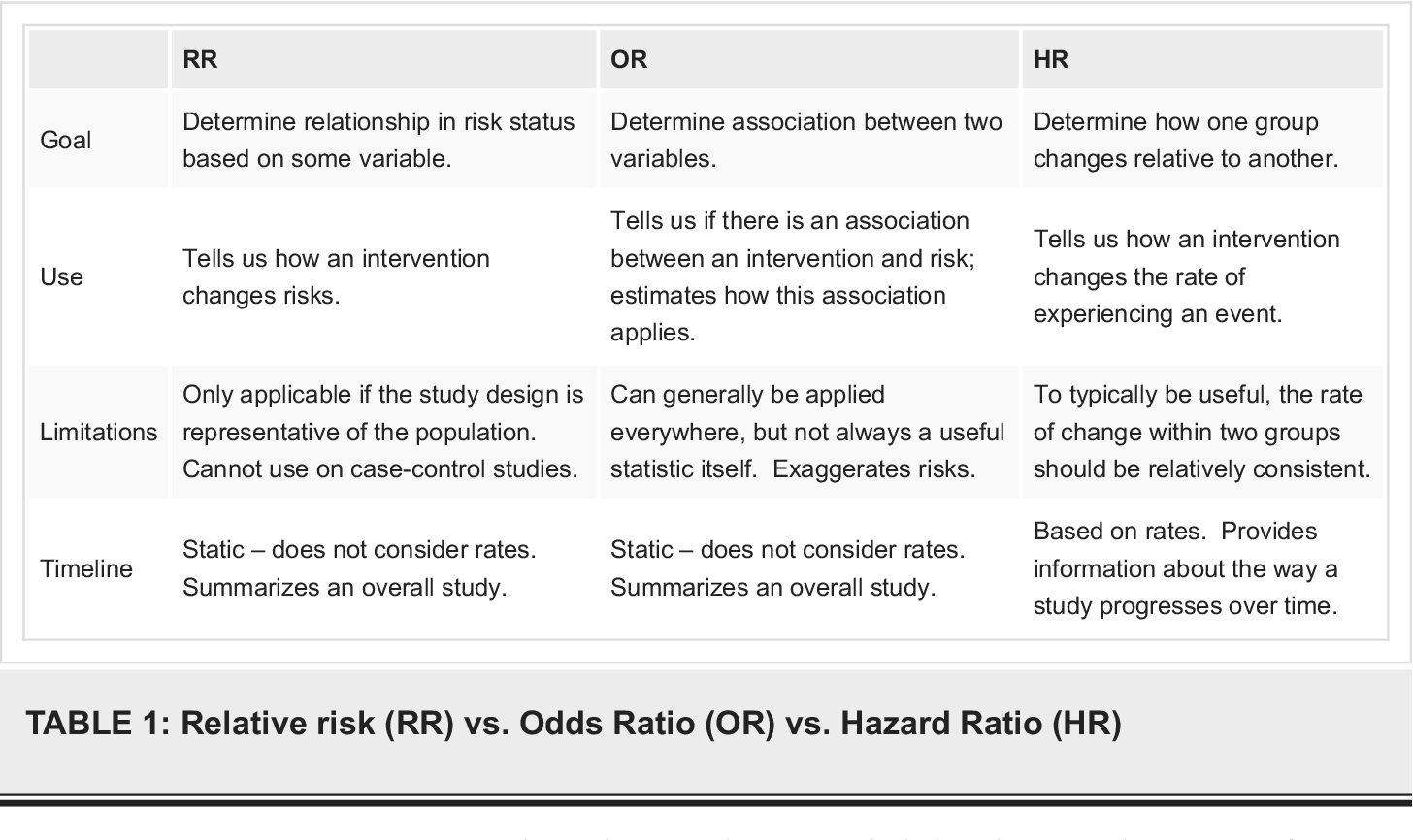



Pdf What S The Risk Differentiating Risk Ratios Odds Ratios And Hazard Ratios Semantic Scholar




Calculate Relative Risk With 95 Confidence Intervals



Definition And Calculation Of Odds Ratio Relative Risk Stomp On Step1




Probability Odds Ratio And Relative Risk Gpraj




Ppt The Odds Ratio Relative Odds Powerpoint Presentation Free Download Id 6056




How To Be Awesome At Biostatistics And Literature Evaluation Part Ii Tl Dr Pharmacy



1




What Is An Odds Ratio And How Do I Interpret It Critical Appraisal




Calculation Of Odds Ratios Or And Relative Risk Rr Derived From Download Scientific Diagram
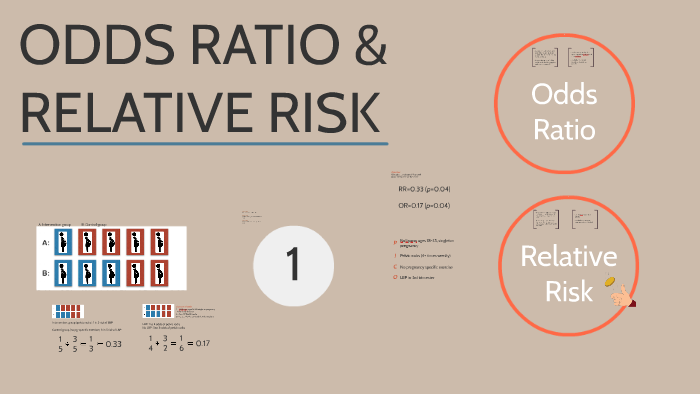



Odds Ratio Relative Risk By Susi Delaney




Hsrp 734 Advanced Statistical Methods June 5 08




Odds Ratio Relative Risk Calculation Definition Probability Odds Youtube




Measures Of Effect Relative Risks Odds Ratios Risk




Odds Ratio Relative Risk Ppt Powerpoint Presentation Model Example Cpb Presentation Graphics Presentation Powerpoint Example Slide Templates




I Ytimg Com Vi Prbyucqzezu Maxresdefault Jpg




First Aid Epidemiology Biostatistics Flashcards Quizlet
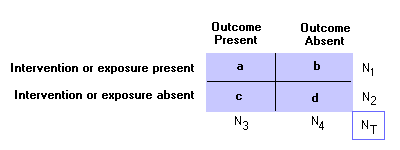



Epidemiology Glossary Physical Diagnosis Skills University Of Washington School Of Medicine
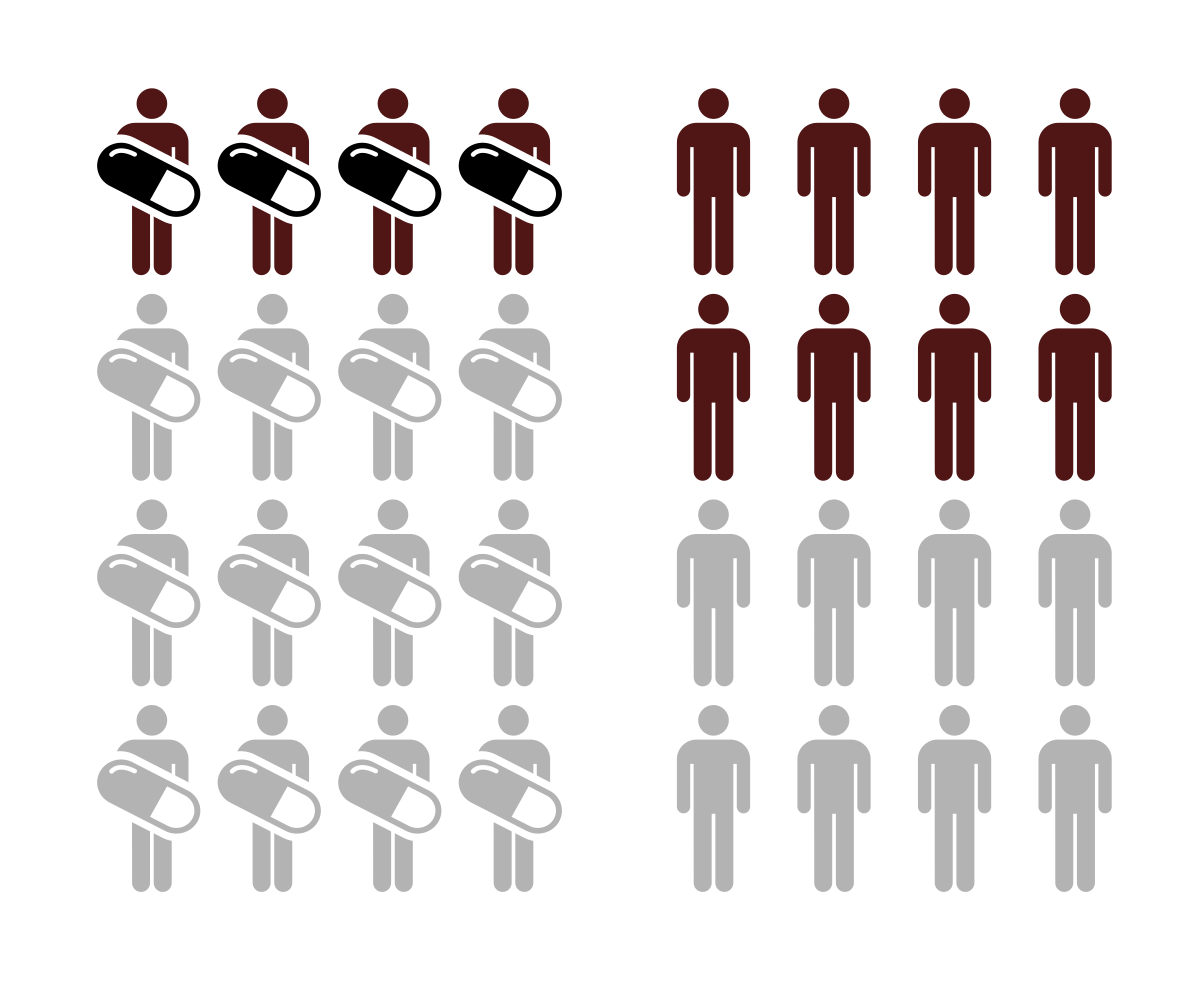



Relative Risk Wikipedia




1 Relative Risks Odds Ratios Or Hazard Ratios Of Risk Factors For Download Table



What Is The Difference Between The Risk Ratio Rr And The Odds Ratio Or Quora




Figure 2 X 2 Table With Statpearls Ncbi Bookshelf
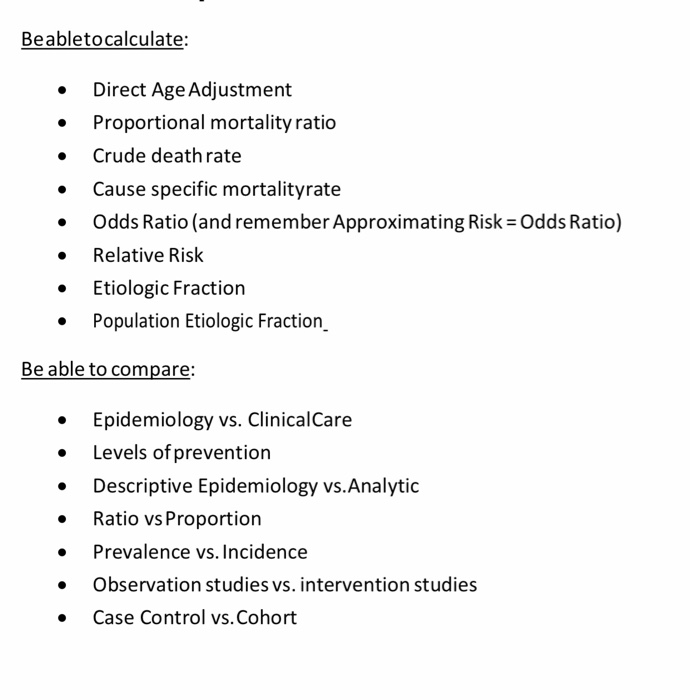



Beabletocalculate Direct Age Adjustment Chegg Com
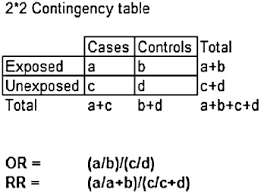



Odds Ratio Or And Relative Risk Rr My Best Writer



6 7 8 9 10 11 12 13 14 15 16 17 18 19 21 22 23 24 25 26 27 28 29 30 Review Incidence And Prevalence Are Formally Defined On Slide 7 Birth And Death Rates Are Also Estimates Of Absolute Risk Risk Factors Are Identified By Determining
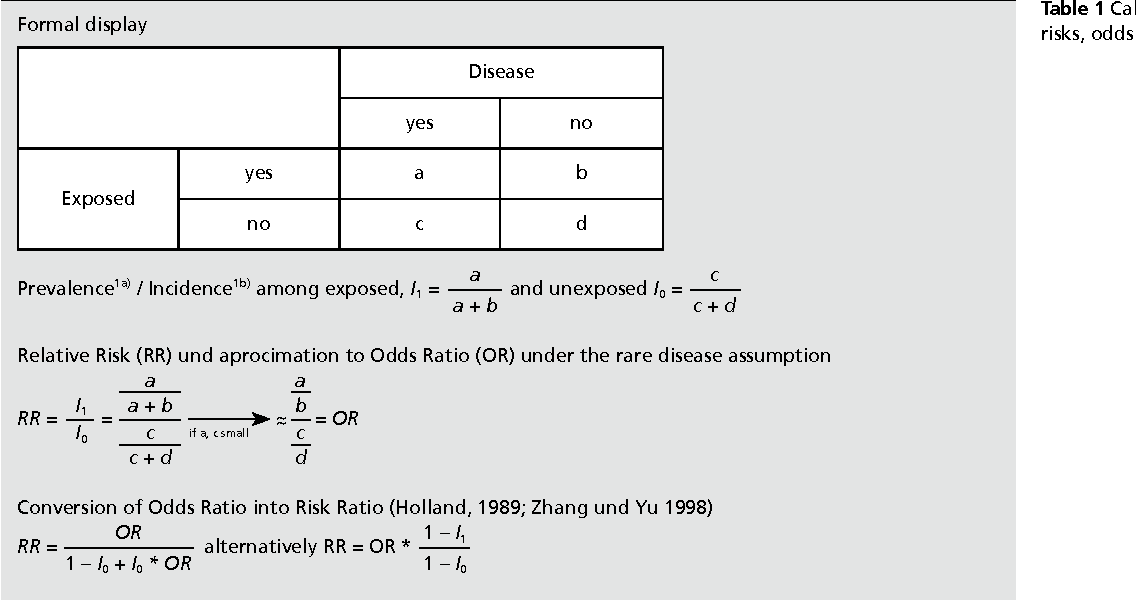



Pdf When To Use The Odds Ratio Or The Relative Risk Semantic Scholar



2
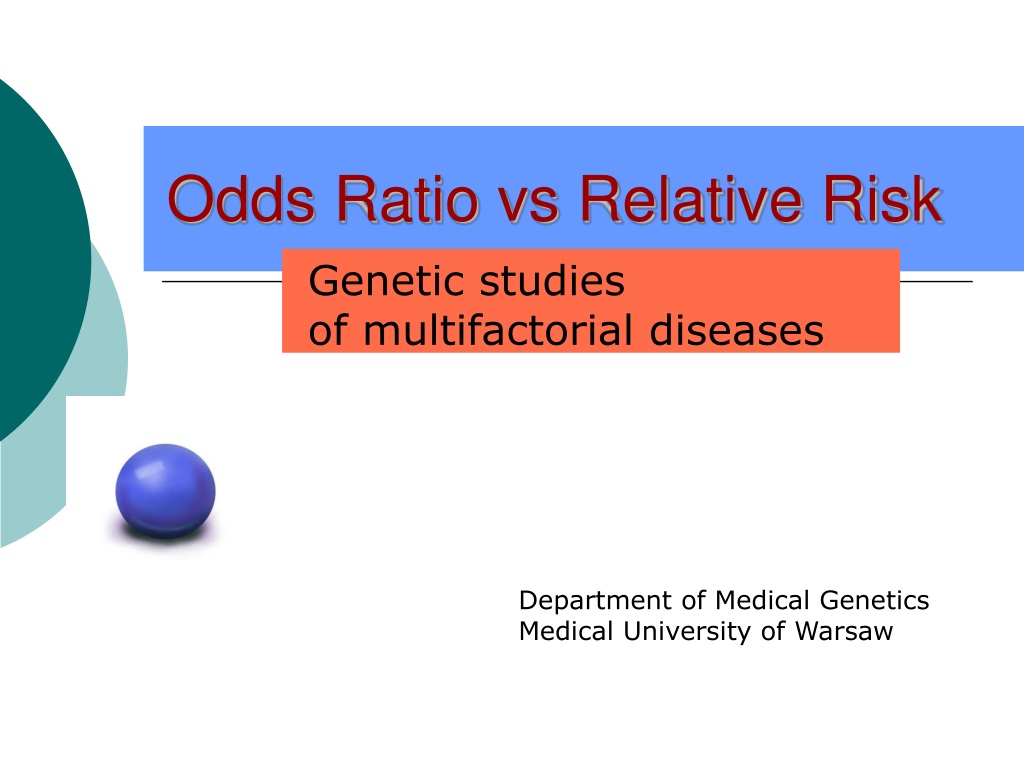



Ppt Odds Ratio Vs Relative Risk Powerpoint Presentation Free Download Id



Can Tax Deadlines Cause Fatal Mistakes Chance
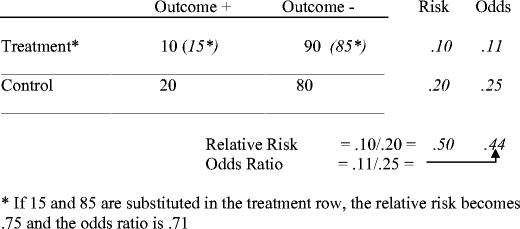



Tips For Teachers Of Evidence Based Medicine Understanding Odds Ratios And Their Relationship To Risk Ratios Springerlink




How To Interpret And Use A Relative Risk And An Odds Ratio Youtube



Requesting Effect Measures
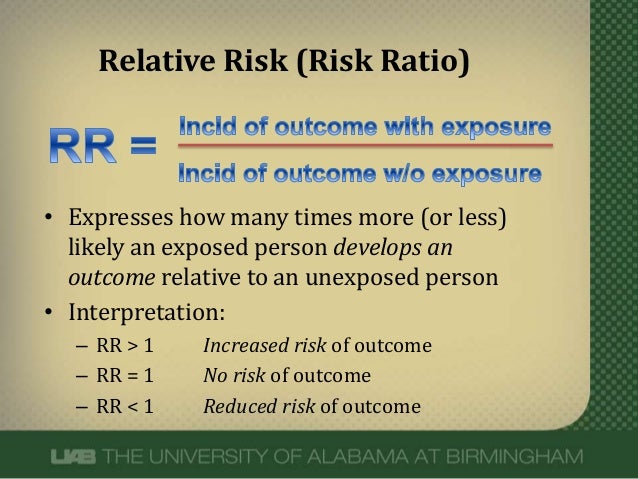



What Does An Odds Ratio Or Relative Risk Mean
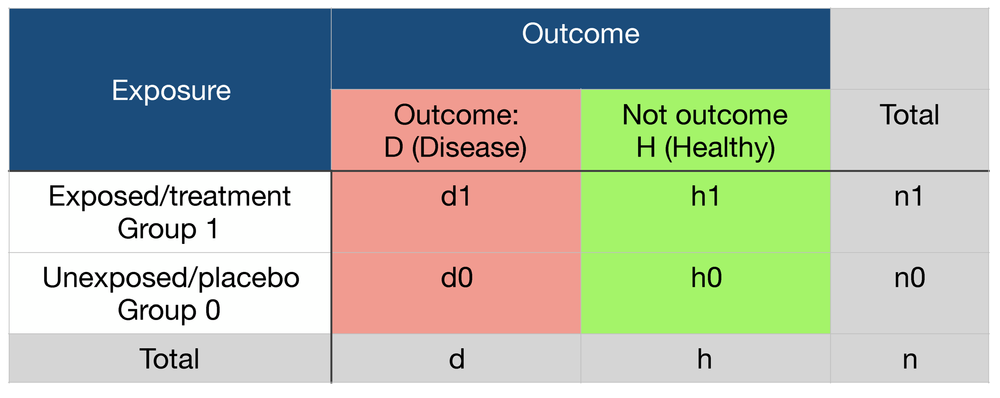



Probability Odds Ratio And Relative Risk Gpraj
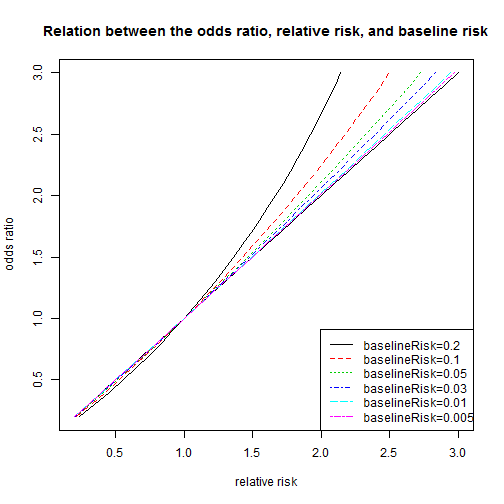



Relation Between The Odds Ratio Relative Risk And Baseline Risk




Measures Of Effect Relative Risks Odds Ratios Risk Difference And Number Needed To Treat Kidney International



Relative Risk Ratios And Odds Ratios




When Can Odds Ratios Mislead The Bmj




Categorical Data Ziad Taib Biostatistics Astra Zeneca February




What Are Cross Tables Odds Ratio And The Relative Risk Gcp Service




Relative And Attributable Risks Absolute Risk Involves People




Pdf Odds Ratio Or Relative Risk For Cross Sectional Data Semantic Scholar
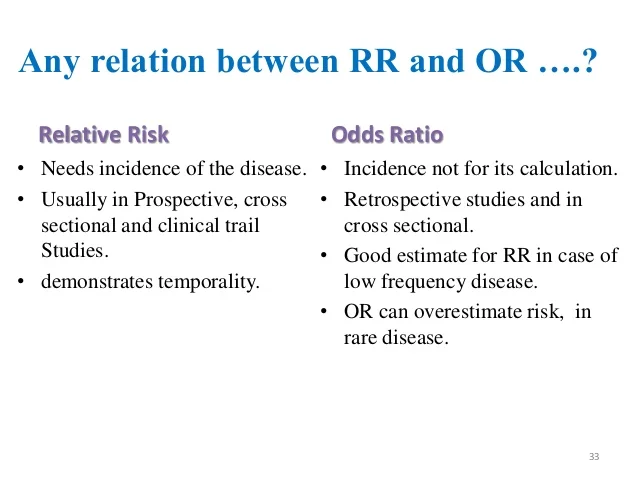



Measuring Of Risk
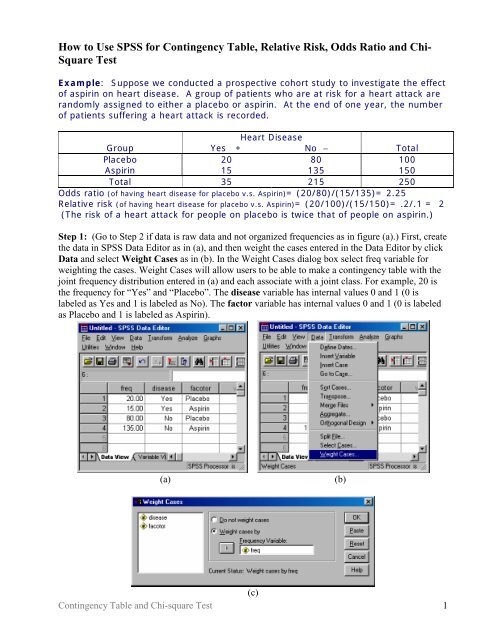



How To Use Spss For Contingency Table Relative Risk Odds Ratio




Relative Risk Odds Ratios Youtube




Definition And Calculation Of Odds Ratio Relative Risk Stomp On Step1



Research Statistics Basics Contents 1 Basic Concepts 2 References Basic Concepts Null Hypothesis The Hypothesis That The Independent Variable Has No Effect On The Dependent Variable For Example Steroids Do Not Improve Outcomes In Ards Would Be
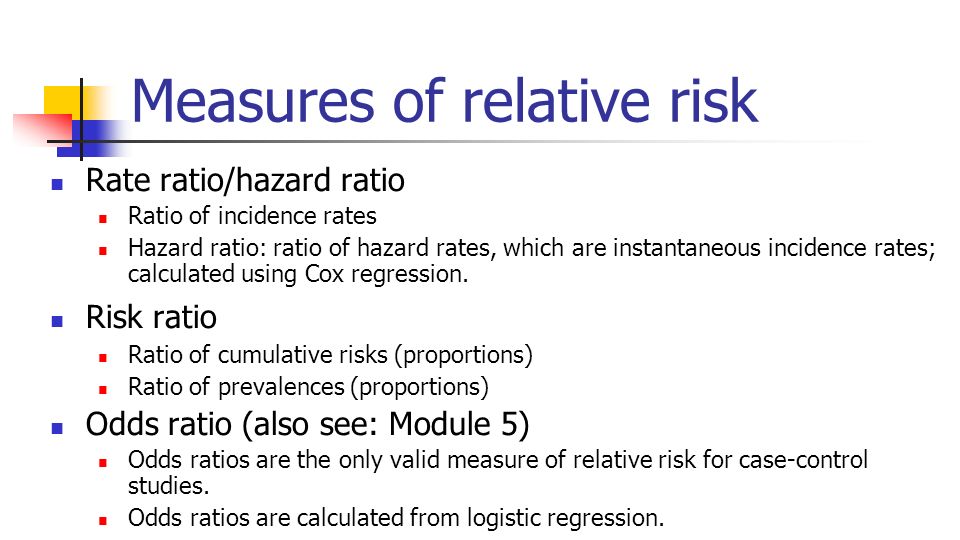



Statistics In Medicine Ppt Download




Definition And Calculation Of Odds Ratio Relative Risk Stomp On Step1 How To Memorize Things Public Health Jobs Math Lessons



Relative Risk And Odds Ratios Categorical Data And Chi Square Tests Biostatistics For The Health Sciences




Glossary Of Research Terminology




The Difference Between Relative Risk And Odds Ratios The Analysis Factor




Relative Risk Or Odds Ratio For Cardiovascular Disease Incidence Download Scientific Diagram
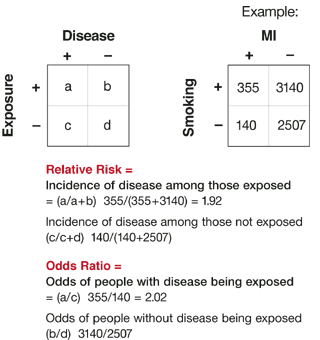



Relative Risks And Odds Ratios What S The Difference Mdedge Family Medicine



0 件のコメント:
コメントを投稿